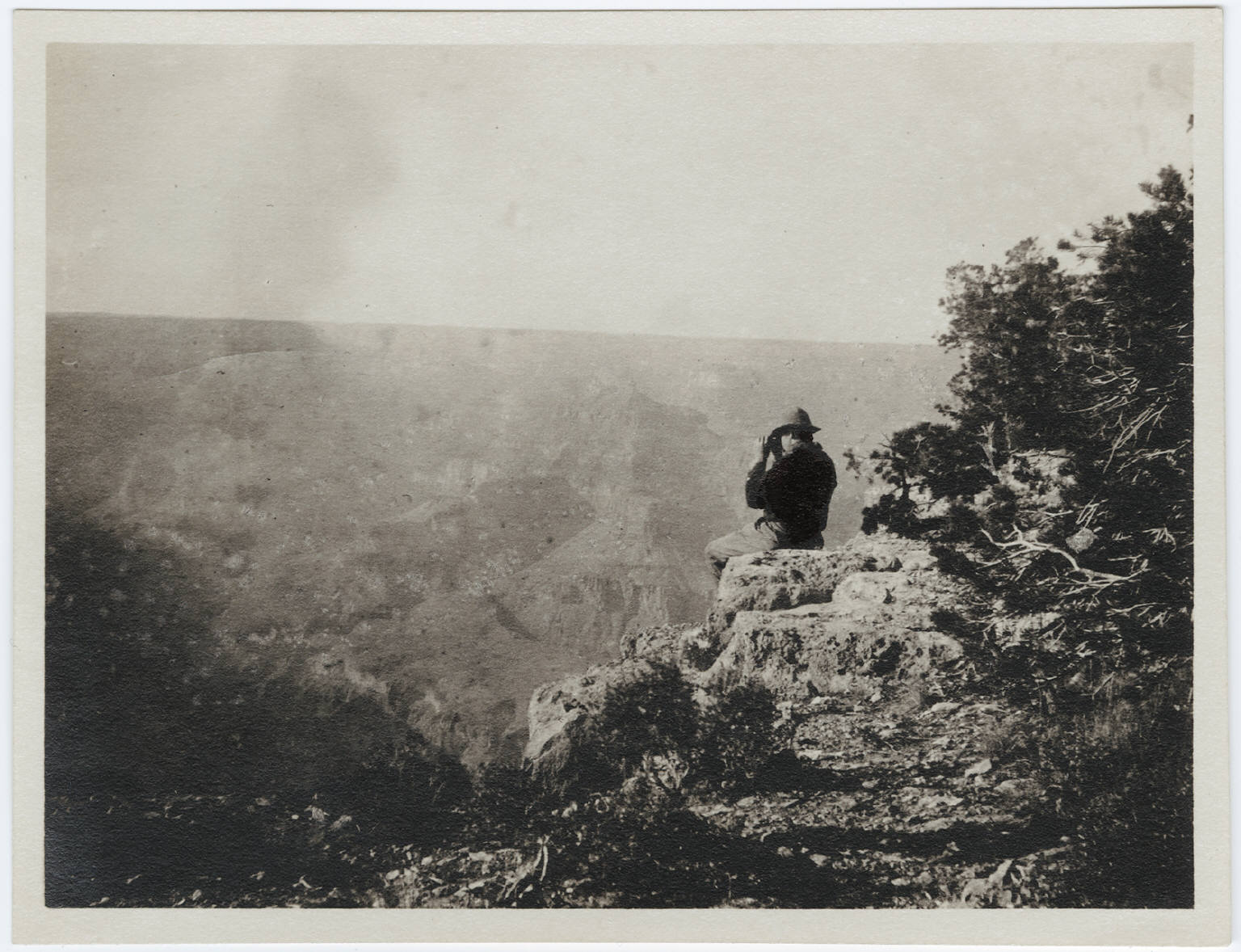This is the story of how a striking painting and poetic words helped lead to the establishment of a national park. Although inhabited for over 7,000 years by various nomadic Native American peoples, the remote canyon region of southern Utah was largely unexplored and uncharted. Southern Paiute tribes who arrived in the 1300s named the canyon Mukuntuweap, meaning “straight canyon” and possibly referring to the very high, nearly perpendicular canyon walls. When Mormon settlers came to the fertile valley in the mid 1800s for farming, timbering, and to escape religious persecution, pioneer Isaac Behunin named the canyon Zion, a biblical reference to a heavenly city and a place of rest. In wonder and awe, he proclaimed, “These are the Temples of God, built without the use of human hands...this is Zion.”
In 1871, at age 17, Frederick Samuel Dellenbaugh accompanied explorer and topographer John Wesley Powell on a two-year expedition to assist in sketching and mapping the southwest region of the United States. Following his explorations, Dellenbaugh traveled to Europe to study art in Munich and Paris. When he returned to Utah in 1903, some 30 years after his initial visit, he painted Zion Canyon and submitted it for exhibition at the 1904 St. Louis World’s Fair. It was the first time that Zion was shown to the world. Spectators were amazed and incredulous. They believed the towering red-hued rocks sprung from Dellenbaugh’s imagination, so unfamiliar was the scenery. Dellenbaugh also published a 17-page article entitled “A New Valley of Wonders” in Scribner’s Magazine, a leading periodical of the day. Black and white photographs accompanied his florid text: “One hardly knows just how to think of it. Never before has such a naked mountain of rock entered into our minds! ...There is almost nothing to compare to it.”
Dellenbaugh’s paintings and stirring words inspired people to visit the canyon and contributed to President Taft designating the area as Mukuntuweap National Monument in 1909. A decade later, Congress changed the name and established Zion National Park. It is Utah’s oldest and most popular park.
- Martina


 Frederick Samuel Dellenbaugh
Frederick Samuel Dellenbaugh